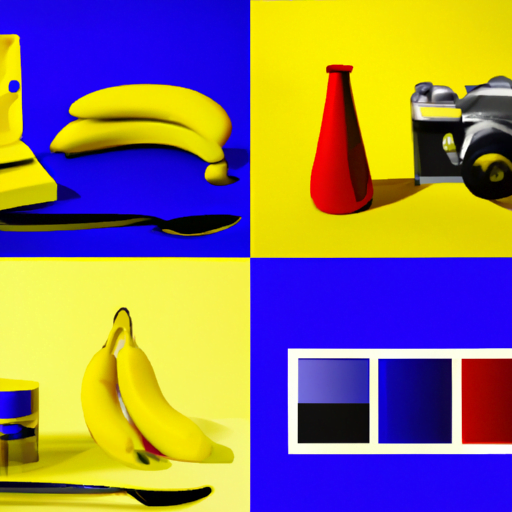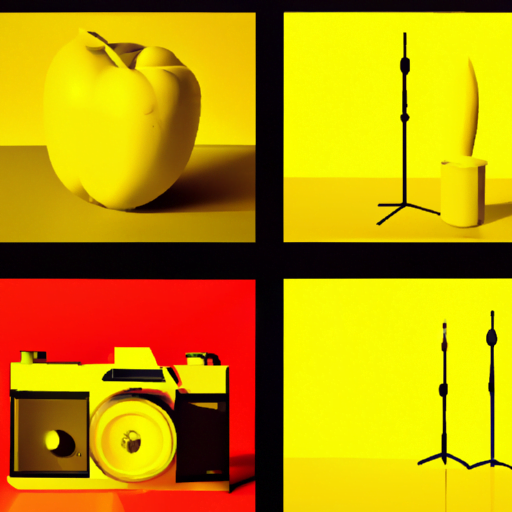
-
Table of Contents
From Concept to Execution: Bringing Ideas to Life in Design

Design is a powerful tool that allows us to transform ideas into tangible creations. Whether it’s a product, a website, or a piece of art, the process of bringing a concept to life requires careful planning, creativity, and execution. In this article, we will explore the journey from concept to execution in design, uncovering the key steps and considerations along the way.
The Importance of a Strong Concept
Every successful design project starts with a strong concept. A concept is the foundation upon which the entire design will be built. It sets the direction, defines the purpose, and guides the decision-making process. Without a clear and compelling concept, a design can easily lose its focus and fail to resonate with its intended audience.
When developing a concept, it’s important to consider the target audience, the goals of the design, and the desired emotional response. For example, if the design is for a children’s toy, the concept should be playful, colorful, and engaging. On the other hand, if the design is for a luxury brand, the concept should evoke sophistication, elegance, and exclusivity.
One example of a design concept that successfully brought an idea to life is the Nike Air Jordan sneakers. The concept behind these iconic shoes was to create a line of basketball shoes that combined performance, style, and the personality of basketball legend Michael Jordan. This concept resonated with basketball fans and sneaker enthusiasts alike, leading to the creation of one of the most successful and enduring sneaker lines in history.
Research and Inspiration
Once a concept has been established, the next step is to conduct research and gather inspiration. Research helps designers understand the target audience, the market landscape, and the latest trends and technologies. It provides valuable insights that can inform the design decisions and ensure that the final product meets the needs and expectations of its intended users.
Inspiration can come from a variety of sources, including nature, art, architecture, and other designs. By exploring different sources of inspiration, designers can expand their creative horizons and discover new ideas and approaches. For example, the design of the Sydney Opera House was inspired by the sails of a ship, resulting in a unique and iconic architectural masterpiece.
Case Study: Apple’s iPhone
One of the most successful examples of bringing an idea to life in design is Apple’s iPhone. The concept behind the iPhone was to create a revolutionary device that combined a phone, an iPod, and an internet communicator. To bring this concept to life, Apple conducted extensive research on user needs and behaviors, as well as the latest technologies and trends in mobile devices.
Inspired by the simplicity and elegance of Scandinavian design, Apple’s design team created a sleek and minimalist device with a touch screen interface. The iPhone’s iconic design, combined with its innovative features and user-friendly interface, revolutionized the mobile phone industry and set a new standard for smartphone design.
Sketching and Prototyping
Once the research and inspiration phase is complete, designers move on to the sketching and prototyping stage. Sketching allows designers to quickly explore different ideas and concepts on paper. It’s a low-fidelity way of visualizing the design and testing different layouts, compositions, and interactions.
Prototyping, on the other hand, involves creating a more refined and interactive version of the design. It allows designers to test the functionality, usability, and user experience of the design before moving on to the final production stage. Prototypes can range from simple paper mock-ups to fully interactive digital prototypes.
During the sketching and prototyping stage, designers often iterate and refine their ideas based on feedback and user testing. This iterative process helps identify and address any potential issues or challenges early on, ensuring that the final design meets the desired objectives and delivers a seamless user experience.
Execution and Production
Once the design has been finalized and approved, it’s time to move on to the execution and production stage. This is where the design is brought to life through the use of various tools, technologies, and materials. The execution phase requires attention to detail, precision, and collaboration with manufacturers, developers, and other stakeholders.
Depending on the nature of the design, the execution phase can involve different processes and techniques. For example, in product design, it may involve creating 3D models, selecting materials, and overseeing the manufacturing process. In web design, it may involve coding, testing, and optimizing the website for different devices and browsers.
Throughout the execution and production stage, it’s important to maintain a strong focus on quality control and consistency. Regular testing and evaluation should be conducted to ensure that the final product meets the desired standards and specifications. Any issues or discrepancies should be addressed promptly to avoid compromising the overall design integrity.
Case Study: Tesla’s Model S
Tesla’s Model S is a prime example of a design that successfully brought an idea to life through meticulous execution and production. The concept behind the Model S was to create an electric car that combined performance, range, and luxury. To achieve this, Tesla invested heavily in research and development, as well as cutting-edge manufacturing technologies.
The execution of the Model S involved the use of advanced materials, such as aluminum and carbon fiber, to reduce weight and increase efficiency. Tesla also developed its own battery technology, enabling the Model S to achieve an impressive range on a single charge. The attention to detail and commitment to quality resulted in a car that not only met the initial concept but exceeded customer expectations.
Summary
Bringing ideas to life in design is a complex and multi-faceted process that requires careful planning, creativity, and execution. From developing a strong concept to conducting research and gathering inspiration, from sketching and prototyping to executing and producing the final design, each step plays a crucial role in transforming an idea into a tangible creation.
By understanding and following these key steps, designers can increase the chances of success and create designs that resonate with their intended audience. Whether it’s a product, a website, or a piece of art, the journey from concept to execution is an exciting and rewarding adventure that allows designers to unleash their creativity and make a lasting impact.
